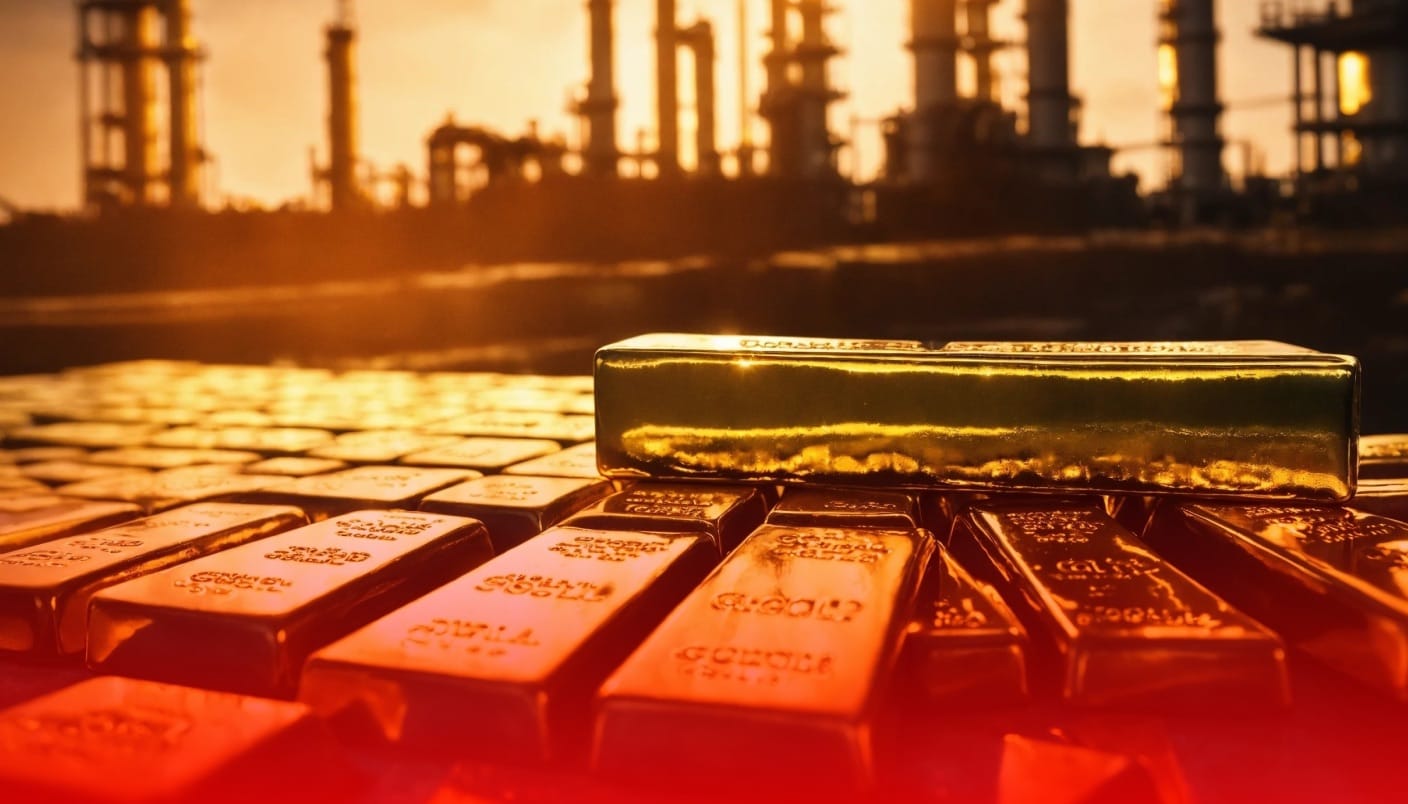Breaking News! 🚨 Top 10 brokers is here! See the most trusted trading platforms of 2024. Go now!
Investing in Commodities: From Gold to Oil
In this comprehensive guide, we delve into the multifaceted world of commodity investing, unraveling the complexities and shedding light on the strategies that can help investors capitalize on these tangible assets.
2 years ago, Apr 18, 9:38 am

Raw materials such as iron ore, crude oil, and precious metals serve as the lifeblood of the global economy. These commodities present distinct chances for savvy investors to capitalize on their constantly fluctuating values. However, delving into commodity investment demands a specialized understanding and may entail higher risks compared to traditional assets like stocks and bonds.
In this comprehensive guide, we delve into the multifaceted world of commodity investing, unraveling the complexities and shedding light on the strategies that can help investors capitalize on these tangible assets.
Overview of Major Commodity Categories
Commodities encompass raw materials essential for the production of finished goods, spanning agricultural products, mineral ores, and fossil fuels. In financial markets, commodities represent tangible goods traded distinctively from securities like stocks and bonds, which exist solely as financial contracts.
These commodities fall into four primary categories:
- Energy, which includes oil, natural gas, coal, ethanol, and even uranium. Renewable energy forms like wind and solar power also fall under this category.
- Metals, consisting of precious metals such as gold, silver, palladium, and platinum, along with industrial metals like iron ore, tin, copper, aluminum, and zinc.
- Agricultural products, encompassing edible goods like cocoa, grain, sugar, and wheat, as well as non-edible products like cotton, palm oil, and rubber.
- Livestock, which includes live animals such as cattle and hogs.
Commodity prices fluctuate continuously in response to shifts in global supply and demand dynamics. For instance, conflict in Ukraine might drive up grain prices, whereas increased oil production in the Middle East could suppress global oil prices.
Investors in the commodity market seek to capitalize on supply and demand trends or mitigate risk through portfolio diversification by incorporating various asset classes.
Ryan Giannotto, a Chartered Financial Analyst (CFA) and Director of Research at GraniteShares, an ETF issuer based in New York City, emphasizes, “The real advantages of commodity trading lie in the distinct exposures from the stock market and the potential for inflation protection.”
Factors Influencing Commodity Prices
In the intricate web of global commodity markets, myriad factors intertwine to influence the prices of various commodities. Understanding these multifaceted influences is crucial for investors seeking to navigate these markets adeptly.
One primary driver of commodity prices is the dynamics of supply and demand. Any disruptions or shifts in the balance between the two can have significant repercussions on prices. Natural disasters, geopolitical tensions, and regulatory changes are among the myriad factors that can disrupt supply chains or alter demand patterns, thereby impacting prices.
Macroeconomic indicators also play a pivotal role in shaping commodity prices. Economic growth, inflation rates, and currency fluctuations can all exert considerable influence. For instance, robust economic growth often spurs demand for commodities, while inflationary pressures may drive investors towards commodities as a hedge against currency devaluation.
Moreover, geopolitical events can send shockwaves through commodity markets. Conflicts, trade disputes, and sanctions can disrupt supply chains, leading to price volatility. Additionally, government policies, such as subsidies or tariffs, can directly affect the prices of certain commodities.
Technological advancements and innovations also have a bearing on commodity prices. Improvements in extraction techniques or agricultural practices can increase supply and lower prices, while breakthroughs in clean energy technologies may reduce demand for fossil fuels, impacting prices in energy markets.
Furthermore, weather patterns and climate change play a critical role in agricultural commodity prices. Droughts, floods, and other extreme weather events can devastate crops, leading to shortages and price spikes. Climate change-induced shifts in growing conditions may also necessitate adaptations in agricultural practices, influencing supply and prices.
Market sentiment and speculation further contribute to commodity price dynamics. Investor perceptions of future supply and demand trends, as well as broader market trends, can drive speculative trading activity, amplifying price fluctuations.
Strategies for Commodity Investing
Trading commodities in your investment portfolio offers various avenues, each with its unique set of advantages and drawbacks.
Commodities Futures
Trading commodities commonly involves buying and selling contracts on futures exchanges. These agreements hinge on future price expectations for a commodity. For instance, you might agree to a futures contract to purchase 10,000 barrels of oil at $45 per barrel in 30 days. When the contract expires, you close it out by taking an opposite position through spot trading. This method enables you to profit if the spot price surpasses your contract price, and vice versa. Futures trading demands a specialized brokerage account.
Physical Commodity Purchases
While futures trading doesn’t involve physical commodities, investors can opt to directly purchase precious metals like gold and silver. This approach grants exposure to the tangible assets, but transaction costs can be higher.
Commodities Stocks
Investors can also acquire stocks of companies involved in commodities. For instance, buying oil company stocks allows one to benefit from rising oil prices. Although less risky than direct commodity investment, stock prices are influenced by various factors beyond commodity prices.
Commodities ETFs, Mutual Funds, and ETNs
Commodity-based mutual funds, ETFs, and ETNs pool funds from multiple investors to create portfolios tracking commodity prices. These funds offer accessibility and diversification, but investors incur management fees and may not perfectly mirror commodity prices.
Commodity Pools and Managed Futures
Private funds like commodity pools and managed futures employ complex trading strategies in commodity markets. While offering potential for higher returns, they often entail higher management costs and may not be publicly traded.
Distinguishing Features of Commodity Trading
Commodity trading commonly involves leverage, allowing investors to control larger positions with a fraction of the capital. However, this amplifies both gains and losses. Furthermore, commodity trading tends to be short-term, with markets open nearly 24/7, presenting opportunities for swift gains or losses.
In summary, commodity trading offers potential for significant gains but carries higher risks and requires specialized knowledge. Each approach to commodity investment presents its unique blend of opportunities and challenges, catering to investors with diverse risk appetites and investment goals.
Get SCTA's daily newsletter in your inbox every weekday.
You may unsubscribe at any time.
